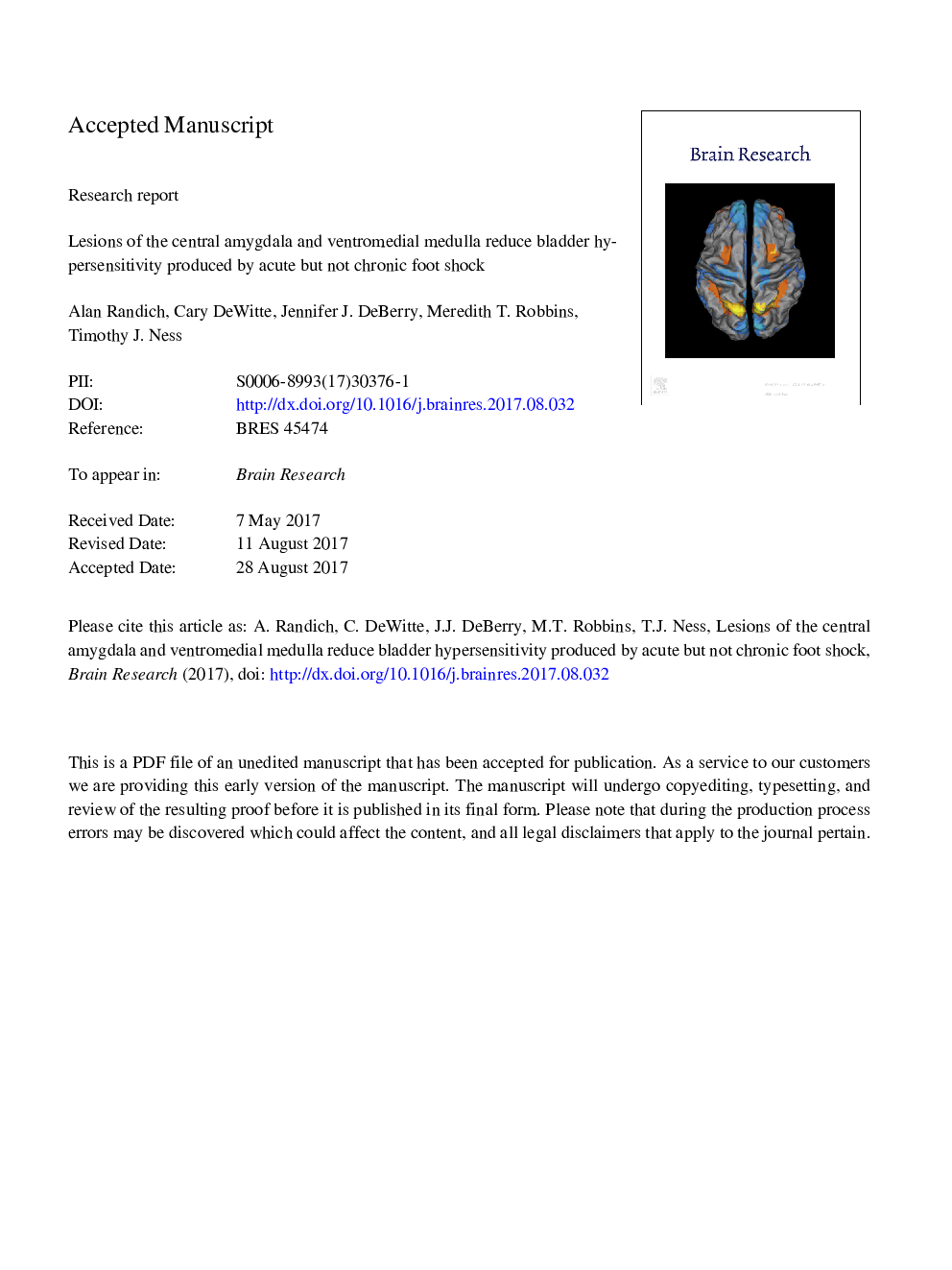| Article ID | Journal | Published Year | Pages | File Type |
|---|---|---|---|---|
| 5736464 | Brain Research | 2017 | 39 Pages |
Abstract
Both acute and chronic stress has been shown to exacerbate symptoms of chronic visceral pain conditions such as interstitial cystitis. Studies using animal models support these findings in that both acute and chronic exposure to foot shock-induced stress (FS) augment nociceptive reflex responses to urinary bladder distension (UBD). Only a few studies have examined the neural substrates mediating these phenomena and it is not clear whether acute and chronic stress engage the same or different substrates to produce bladder hypersensitivity. The present studies examined the role of two important central nervous system structures - the amygdala (AMG) and the ventromedial medulla (VMM) - in mediating/modulating hypersensitivity evoked by acute versus chronic FS using responses to graded UBD in adult, female Sprague-Dawley rats. Bladder hypersensitivity produced by acute FS was significantly reduced by either bilateral central AMG or VMM lesions using measures generated by graded UBD, but these lesions had no significant effects using the same measures on bladder hyperalgesia produced by chronic FS. Our findings provide evidence that neural substrates underlying bladder hypersensitivity produced by chronic stress differ from those produced by acute stress. These findings suggest that while the AMG and VMM participate in pain processing during periods of limited exposure to stress, prolonged stress may recruit a new set of neural substrates not initially activated by acute exposure to stress.
Related Topics
Life Sciences
Neuroscience
Neuroscience (General)
Authors
Alan Randich, Cary DeWitte, Jennifer J. DeBerry, Meredith T. Robbins, Timothy J. Ness,
